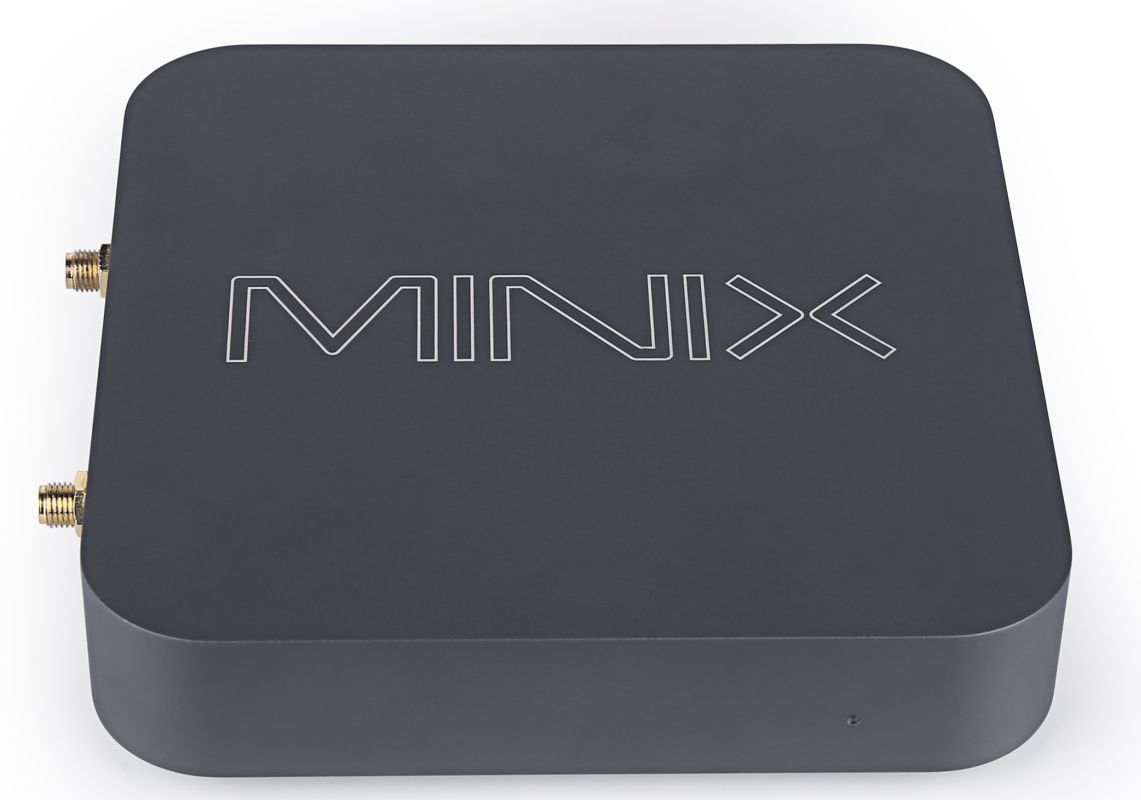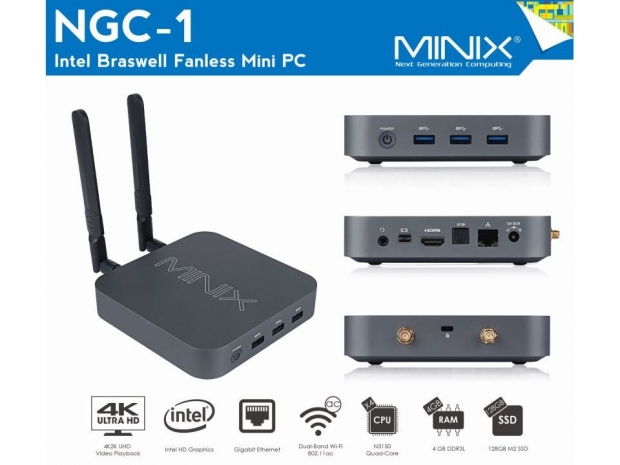MINIX NGC-1 has an Apple-like aluminium metallic housing, passively cooled Celeron N3150, 4GB RAM, 128GB Toshiba M2 SSD and Windows 10.
NGC-1 stands for Next Generation of Computing which has has been inspired by Intel's NUC (Next Unit of Computing). Minix managed to squeeze quite a bit of power into rather a small space, and keep it passively cooled.
The CPU is based on 14nm Braswell Architecture and has four cores and four thread support. The Intel Celeron N3150 works at a 1.6GHz based frequency and it can be boosted to 2.08GHz. it has a TDP of 6W, an SDP of 4W and Intel HD graphics with a base frequency of 320 MHz. It has a boost of 640MHz.
The machine comes with 4GB Samsung DDR3L and a 128GB Toshiba MLC M2 SSD. What makes the machine stands out is that MINIX managed to put an Intel AC3165 802.11ac dual channel WiFi under the bonnet that supports the Bluetooth 4.2.
The machine ships with Windows 10 or Ubuntu OS and has mini DP, HDMI 1.4 up to 4K at 30 FPS and a 3.5mm stereo jack, optical SPDIF and three USB 3.0 ports. There is RJ 45 Gigabit LAN support, Kensington lock and two external antenna ports. A 3A DC12 volt adapter is included in the package.
The MSRP is US$399.90/399.90EURO/299.90GBP which is not that cheap but MINIX says the premium components, Windows 10 licence and apple aluminium like metal finish are value for money. We have to admit that it looks better than any mini PC we ever seen, due to its super high quality aluminium finish.
You get a high quality machine with a great component and pre-installed Windows 10, which you can just turn you on and you are good to go. Customers buying a NUC and separately buying memory, SSD and an operating system might end up with a similar cost. MINIX gives you a factory cost, preassembles everything and uses the components that are tested to work with each other. That has to worth something but those who are purely do it yourself might want to look the other way.




